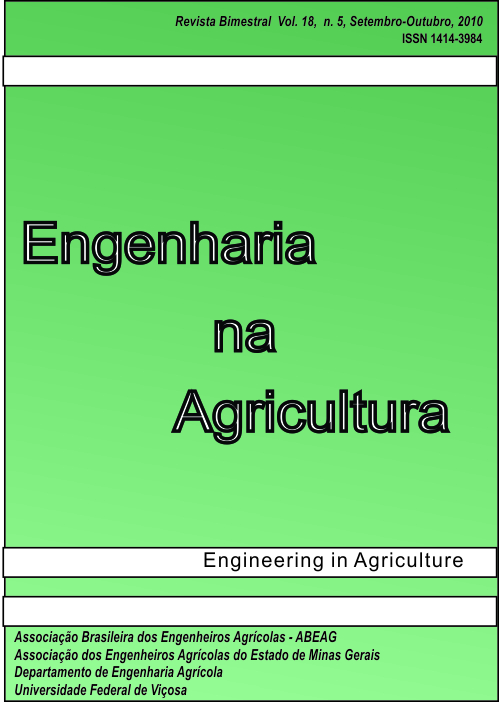INFLUENCE OF THE DAY HOUR AND DIRECTION OF THE SOWING ON SOME VEGETATION INDEXES OF CORN
DOI:
https://doi.org/10.13083/reveng.v18i5.250Keywords:
aplicação de fertilizantes, reflectância, sensoriamento remoto.Abstract
There is high spatial variability of nitrogen availability within the same area. Supplying the required N can increase income, and reduce unnecessary N supply and its leaching to underground water. Measuring spectral reflectance and calculating vegetation indexes is considered promising non-destructive and non-contact approach to instantly measure N deficiency in corn. This study was done to determine the influence of the direction of the sowing and of the hour of the day on determination of the vegetation indexes of corn crop. The sowing lines followed North-South and East-West direction. The sowing direction and sun trajectory influenced the indexes: the NIR/red ratio, the Normalized Difference Vegetation Index (NDVI), the Soil-Adjusted Vegetation Index (SAVI), the Optimized Soil-Adjusted Vegetation Index (OSAVI), the NIR/green ratio and the Green Normalized Difference Vegetation Index (GNDVI). GNDVI was more homogeneous with lower coefficient of variation, thus appears to be more appropriate for use in real time N application and in variable rates, when control of sowing direction is not possible. In other cases SAVI and OSAVI are the more suitable as their models had higher R2.Downloads
Downloads
How to Cite
Issue
Section
License
Authors who publish with this journal agree to the following terms:
The author(s) authorize(s) the publication of the text in the journal;
The author(s) ensure(s) that the contribution is original and unpublished and that it is not in the process of evaluation by another journal;
The journal is not responsible for the views, ideas and concepts presented in articles, and these are the sole responsibility of the author(s);
The publishers reserve the right to make textual adjustments and adapt texts to meet with publication standards.
From submission, the author is fully conceding the paper's patrimonial rights to the publication, but retaining the owner of its moral rights (authorship and paper's identification) according to Creative Commons Attribution-Noncommercial.








 Licensed by
Licensed by 